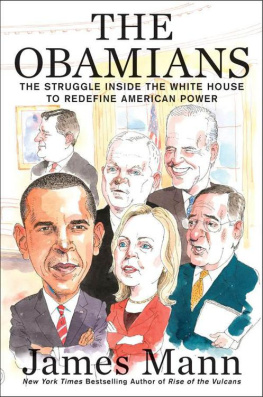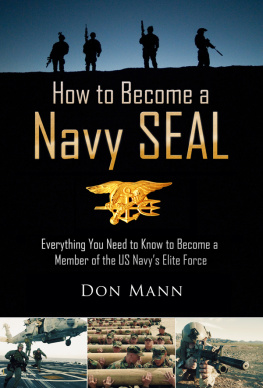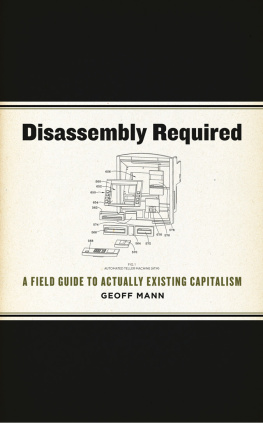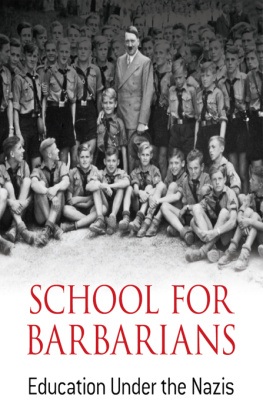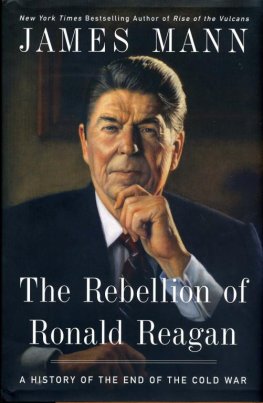THE
OBAMIANS
The Struggle Inside the White House to Redefine American Power
JAMES MANN
VIKING
VIKING
Published by the Penguin Group
Penguin Group (USA) Inc., 375 Hudson Street, New York, New York 10014, U.S.A. Penguin Group (Canada), 90 Eglinton Avenue East, Suite 700, Toronto, Ontario, Canada M4P 2Y3 (a division of Pearson Penguin Canada Inc.) Penguin Books Ltd, 80 Strand, London WC2R 0RL, England Penguin Ireland, 25 St. Stephens Green, Dublin 2, Ireland (a division of Penguin Books Ltd) Penguin Books Australia Ltd, 250 Camberwell Road, Camberwell, Victoria 3124, Australia (a division of Pearson Australia Group Pty Ltd) Penguin Books India Pvt Ltd, 11 Community Centre, Panchsheel Park, New Delhi110 017, India Penguin Group (NZ), 67 Apollo Drive, Rosedale, Auckland 0632, New Zealand (a division of Pearson New Zealand Ltd) Penguin Books (South Africa) (Pty) Ltd, 24 Sturdee Avenue, Rosebank, Johannesburg 2196, South Africa
Penguin Books Ltd, Registered Offices: 80 Strand, London WC2R 0RL, England
First published in 2012 by Viking Penguin, a member of Penguin Group (USA) Inc.
Copyright James Mann, 2012
All rights reserved
LIBRARY OF CONGRESS CATALOGING-IN-PUBLICATION DATA
Mann, Jim, 1946
The Obamians : how a band of newcomers redefined American power / James Mann.
p. cm.
Includes bibliographical references and index.
ISBN 978-1-101-58361-6
1. United StatesForeign relations2009 2. United StatesMilitary policy. 3. United StatesPolitics and government2009 4. Obama, Barack. 5. Obama, BarackPolitical and social views. 6. Obama, BarackFriends and associates. 7. Power (Social sciences)United StatesHistory21st century. 8. Democratic Party (U.S.)History21st century. 9. PresidentsUnited StatesBiography. 10. PoliticiansUnited StatesBiography. I. Title.
E907.M325 2012
973.932092dc23 2011046331
No part of this book may be reproduced, scanned, or distributed in any printed or electronic form without permission. Please do not participate in or encourage piracy of copyrighted materials in violation of the authors rights. Purchase only authorized editions.
While the author has made every effort to provide accurate telephone numbers and Internet addresses at the time of publication, neither the publisher nor the author assumes any responsibility for errors, or for changes that occur after publication. Further, publisher does not have any control over and does not assume any responsibility for author or third-party Web sites or their content.

For Caroline,
My wife and life partner:
May the coming decades we share
Be like the ones that have passed
CONTENTS
INTRODUCTION
L ate in the afternoon of Tuesday, March 15, 2011, President Barack Obama gathered with members of his National Security Council in the Situation Room of the White House. In Libya, Colonel Moammar Gaddafi was on the verge of slaughtering the civilians and ragtag opposition forces that had risen up against him. The Obama administration was confronting an urgent decision: whether to send out American warplanes over Libya in an effort to stop him.
Over the previous two weeks, French president Nicolas Sarkozy and British prime minister David Cameron had been imploring Obama to join them in setting up a no-fly zone over Libya, one that would prevent Gaddafi from using planes and helicopters to shoot at defenseless Libyans on the ground. The private messages British and French officials were sending to Washington went further than their polite public statements. They pointed out that Britain and France had been acceding to American requests for help elsewhere in the world. They had sent troops to fight in Afghanistan in the face of considerable domestic opposition. They had joined with the United States in imposing progressively tougher economic sanctions against North Korea and Iran. But Libya was in Europes own backyard, and the message from Americas closest European allies boiled down to this: We need you on this one.
The National Security Council session opened with an intelligence briefing: Gaddafis forces are now advancing rapidly eastward across the country, beating back the opposition. They are now approaching Ajdabiya, the last major city before Benghazi, and will probably reach there within a few days. Benghazi is Libyas second-largest city, the home base for opposition to the regime in Tripoli; that had been true in the past and was certainly true in Gaddafis Libya. Intelligence officials predicted that Gaddafi, whose army had been rounding up and killing civilians elsewhere, would be at his most brutal in Benghazi.
Next, Mike Mullen, the chairman of the Joint Chiefs of Staff, laid out in detail the plans for a no-fly zone. That was what the British and French had asked for, and the March 15 meeting had been called to make a decision on that request. Obamas own cabinet was divided: Defense Secretary Robert Gates had been opposed to military action, while Secretary of State Hillary Clinton had been in favor.
But Obama suddenly took the deliberations in a new direction. He asked Mullen: Will this no-fly zone stop the scenario we just heard about? He was referring to the predictions of a possible bloodbath in Benghazi. No, replied Mullen. It could effectively take Libyas air force out of action, but Gaddafi would still have more than enough tanks and other heavy equipment on the ground to continue what he was doing.
Then why, asked the president, are we focusing on a no-fly zone? This notion that were going to put some planes in the air to fly over a massacre just doesnt make a lot of sense, he said. We could feel really good about ourselves, on the right side of history, and the people would still get killed.
I want more options, Obama concluded. The administration knew it needed to act quickly. The British and French were already pressing the UN Security Council for a resolution supporting a no-fly zone; if the United States didnt join them, it could be isolated, humiliated or blamed for inaction and any ensuing massacre.
It was late afternoon, and Obama said he had to leave. He and the First Lady were about to host an annual White House dinner for Combatant Commanders (many of Americas senior military leaders) and their spouses. But Obama announced he wanted to reconvene the National Security Council later that night to hear what else he might do besides an ineffective no-fly zone.
The Pentagon was not caught unprepared. Officials there had begun looking at various plans for military action in Libya since early in the month, although the detailed planning had flagged a bit when Pentagon officials noticed Gates arguing in public against American involvement. National Security Adviser Thomas Donilon had already reviewed some of the plans. The possibilities had included everything from putting in ground forces to a no-fly zone to what some in the White House dubbed the Dunkirk optionsending ships to bring people out of Libya.
Obamas dinner began at seven p.m. He did not linger; the NSC meeting reconvened at nine. This time, he was presented with a range of military options. One was to use no American force at all, but simply to provide intelligence and other support for the French and British. Another was the no-fly zone. The third was to go beyond the no-fly zone by sending out planes to strike at Libyan military targets on the ground in a way that would stop their advance toward Benghazi.
They went around the table, debating the alternative approaches. Gates again voiced his reservations. Clinton was out of the country and not at the table, but had made her views known in advance. Finally, the president chose the third military option. Speaking to United Nations Ambassador Susan Rice, he said, I want to call everyones bluff up in New York. Go in tomorrow morning and say that were not going to support this resolution for a no-fly zone, were going to redo it to authorize the use of all necessary measuresa euphemism for military forceto protect civilians. And, Susan, you have to basically say, Thats the only thing were going to support, because thats the only thing thats going to make a difference.

